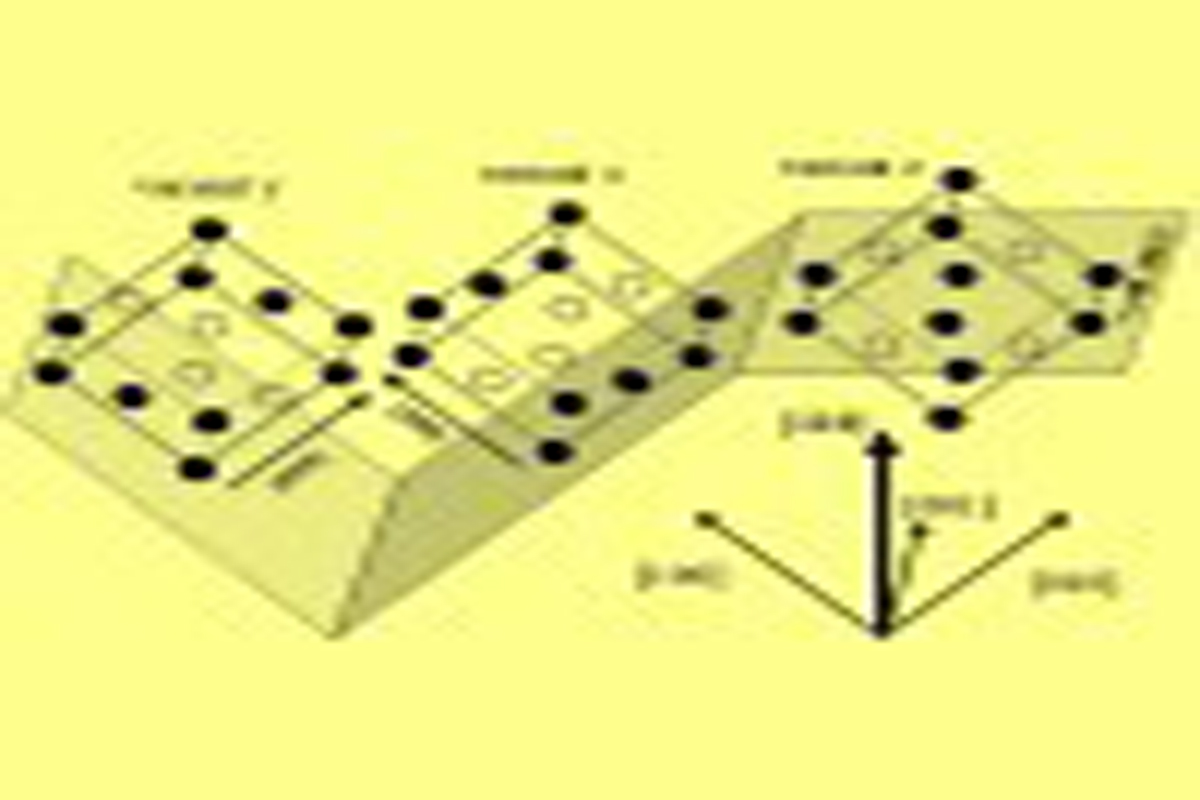High in-plane anisotropy of epitaxial CoPt(110) alloy films prepared by co-sputtering or molecular beam epitaxy on MgO M. Abes, O. Ersen, C. Meny, G. Schmerber, M. Acosta, J. Arabski, C. Ulhaq-Bouillet, A. Dinia, P. Panissod, and V. Pierron-Bohnes J. Appl. Phys. 102 063911 (2007)
We present structural and magnetic properties of 3 sets of structures : as-deposited CoPt films co-sputtered at 900K on MgO(110) substrates with a Pt(110) buffer layer and CoPt films deposited by molecular beam epitaxy (MBE) directly on MgO(110) substrates at 900K, as prepared and annealed at 900K. All layers have the L10 tetragonal structure. The chemical long-range ordering for the as-deposited CoPt films is incomplete in contrast with the annealed CoPt films, where long-range order is the highest. The structural study of these CoPt films grown on MgO(110) has pointed out that 3 variants of the L10 phase coexist. The proportion of x- and y-variants, with the concentration modulation along a vector oriented at 45° with respect to the growth direction, is higher than the proportion of the z-variant with the concentration modulation within the plane. The magnetic study shows an in-plane easy magnetization axis with a large magnetic anisotropy. This is interesting for the magnetic recording media with classical longitudinal writing and reading heads. The simulation of the magnetization loops confirms that the easy magnetization axis is within the plane and along the ![]() direction, favored by the dominant x- and y-variants.
direction, favored by the dominant x- and y-variants.
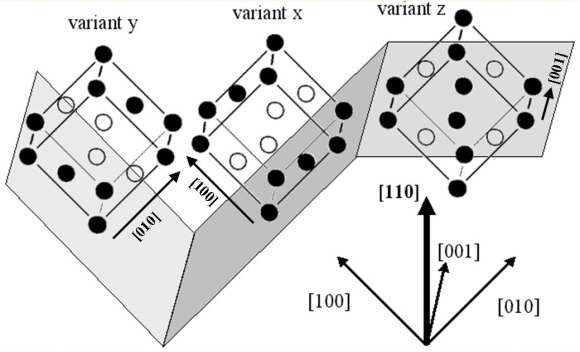
The 3 variants of the L10 phase in the CoPt(100)/MgO(110) samples : the x- and y-variants, orientated along the [100] and [010] directions at 45° of the [110] growth direction, and the z-variant with the modulation of the concentration along [001] in the plane. The x-, y-, and z-variants have been drawn as growing on (100), (010), and (001) facets respectively.
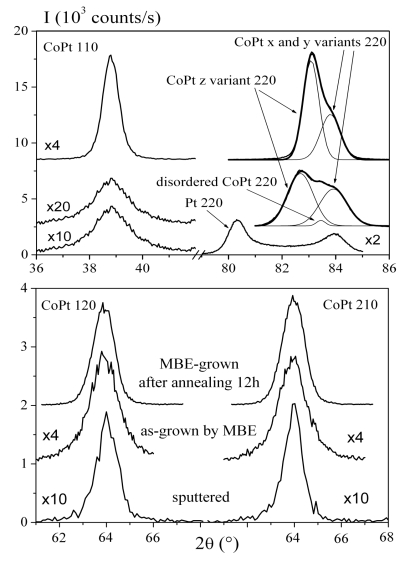
(a) θ – 2 θ scans around the 220 fundamental peak (right) and the 110 superstructure peak (left) for a co-sputtered CoPt alloy deposited on a Pt/MgO(110) substrate (bottom), for a CoPt film deposited by MBE before (middle) and after annealing (top). (b) ω – 2 θ scans around the 120, 210 superstructure peaks for a co-sputtered CoPt alloy deposited on a MgO(110) substrate corresponding, respectively, to the x- and y-variants of the L10 phase.
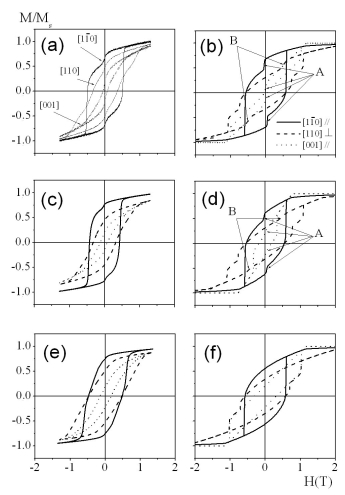
Normalized magnetization loops measured by AGFM at 300K (a,c,e) and simulated (b,d,f) for the different samples : (a,b) co-sputtered CoPt(110) film, CoPt(110) film deposited by MBE before (c,d) and after (e,f) annealing. The magnetic field is applied in-plane along direction, in-plane along [001] direction and along the plane normal of the film in the [110] direction. The simulations are made with a program based on a Stoner-Wohlfarth-like Hamiltonian which takes into account four types of grains with a different magnetocrystalline energy (the 3 ordered variants and a disordered part), a demagnetizing field due to the thin film shape and a weak exchange coupling between grains.
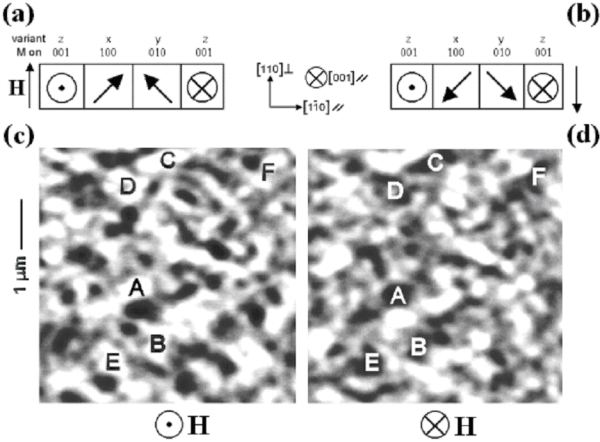
(a,b) Schematic cross view of the expected magnetic domain structure at remanence with positive or negative magnetic field along the [110] direction respectively. (c,d) Corresponding MFM images showing the inversion of contrast (pointed by A-F letters).

